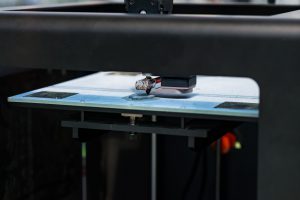Before we enter digital printing, we must make a good distinction between what electronic and analogue printing is. This distinction is clear when we read the technical definition of electronic and analogue printing in books, articles and magazine reading sources.
We need to understand what analogue means and why it’s distinguished from electronic. Digital printing uses photos and other materials on a computer to produce high resolution images on special paper. Since the substance is digital it can be reproduced an hundred times faster than the first and can look and feel exactly like the originals.
 Analogical printing on the flip side, uses photographic plates also has nothing to do with electronic media. These photographs are first processed to eliminate the black borders and cross-hatching in the original negatives, which then undergo some alteration that makes them look like film.
Analogical printing on the flip side, uses photographic plates also has nothing to do with electronic media. These photographs are first processed to eliminate the black borders and cross-hatching in the original negatives, which then undergo some alteration that makes them look like film.
The images in real photos and most other materials are scanned and converted from analogue to digital media. They’re put on a printer display, card or paper. To be able to become printed they’re scanned and converted by the electronic technology, so that they can be replicated on a special card or paper.
Digital photography has the power to create photographs which have as much detail that the edges of the image appears sharp and clean. We can print out images larger than the original and a few high quality digital printers may actually print massive objects, such as printouts of text, even with no mounting plate.
 This kind of printing technology, or scanning and conversion technology, is different from other print shops technologies that choose the image size and dimensions. Printing companies have a tendency to choose the image size and size. When you purchase digital photos from your regional photography store, they will ordinarily use these more compact dimensions as they are not a market standard.
This kind of printing technology, or scanning and conversion technology, is different from other print shops technologies that choose the image size and dimensions. Printing companies have a tendency to choose the image size and size. When you purchase digital photos from your regional photography store, they will ordinarily use these more compact dimensions as they are not a market standard.
When your photos are published you can either choose to print websites, such as glossy photo paper, or you can choose a service which provides to edit the photos to you. This is especially valuable if you do not have a background in photography, but you still wish to save money.
Many photo shops provide editing services to folks who understand little about photography, and this is perfect for anybody who’s just starting out or is hoping to save money. Some picture editing applications is also available, but I have always found it somewhat annoying to have to understand how to use the software and delete unwanted objects which are not vital to the photo.
Digital printing
On the other hand provides a simple method to print out photos on top excellent paper without needing to spend hours editing them. You can just point and click on your mouse, make an image, choose a size, pick a printer, print and move on.
I find this much more convenient than having to employ a support to edit and resize my photos along with being forced to use their service if I want to have something published. Once your photo is on a printer, then it’s your job to make certain you do not damage the image.
Digital printing
is very economical and provides you more choices than your local photography store. It is good to get some help from a professional photographer, but the final decision is yours, irrespective of the information they provide you.
Digital printing can allow you to save money and it may be your very best investment. Do not sacrifice your picture quality in order to save a couple bucks and do not hesitate to take advantage of what digital printing has to offer you.